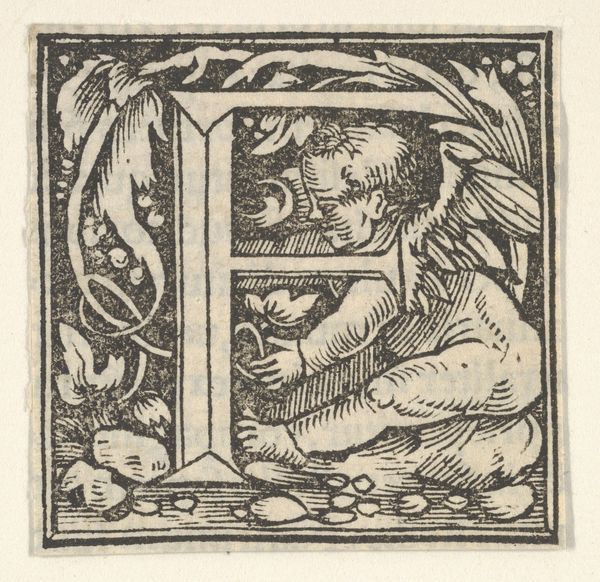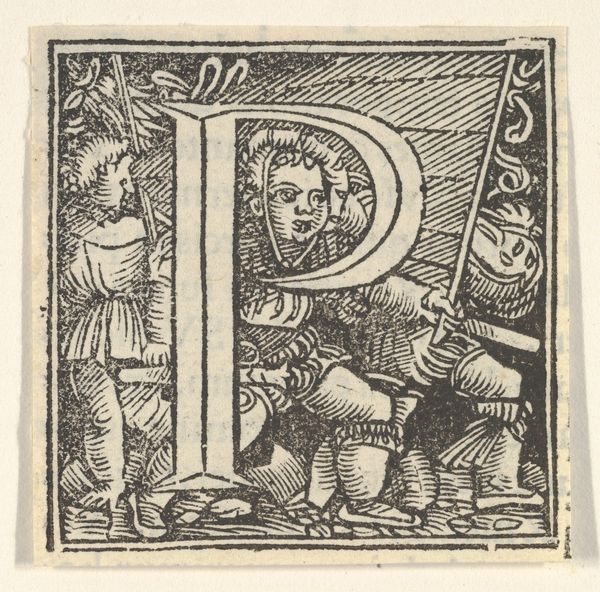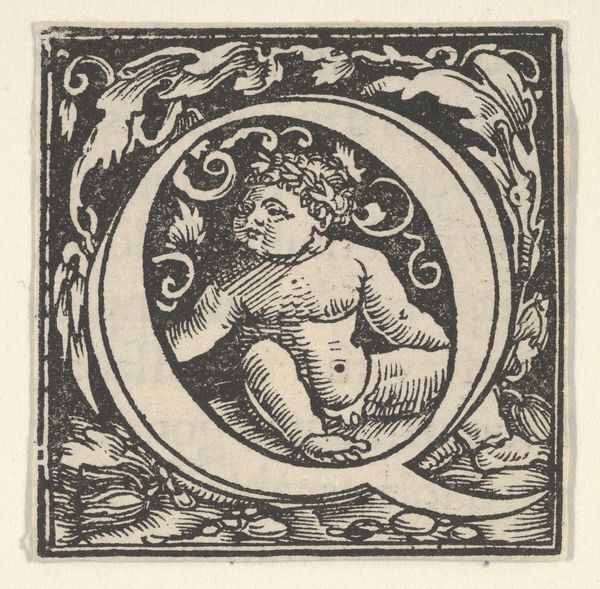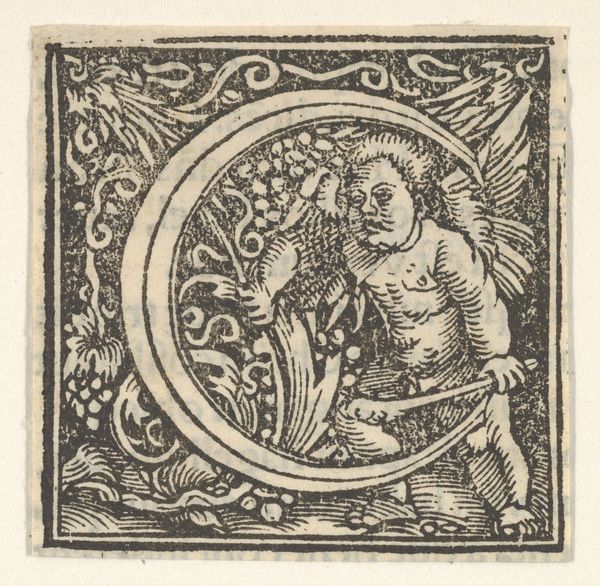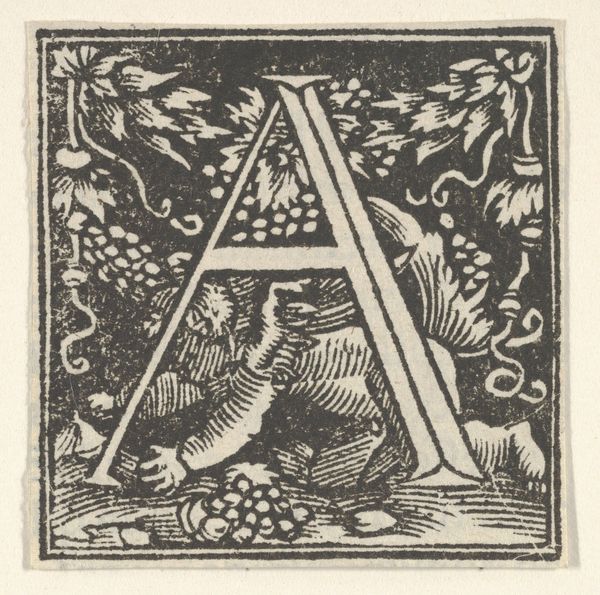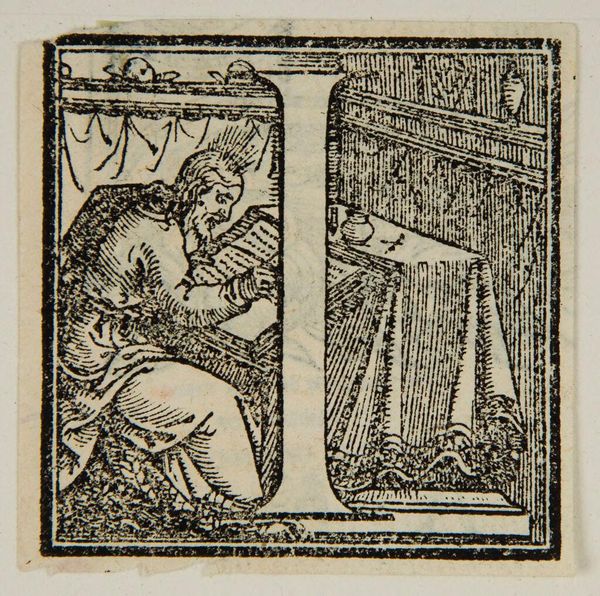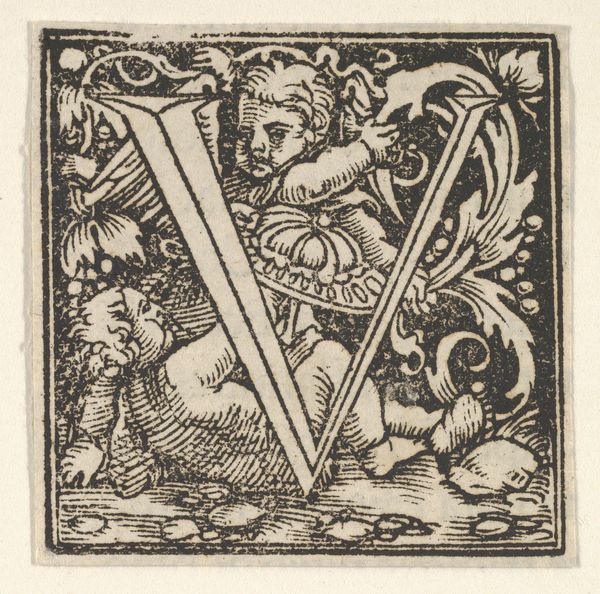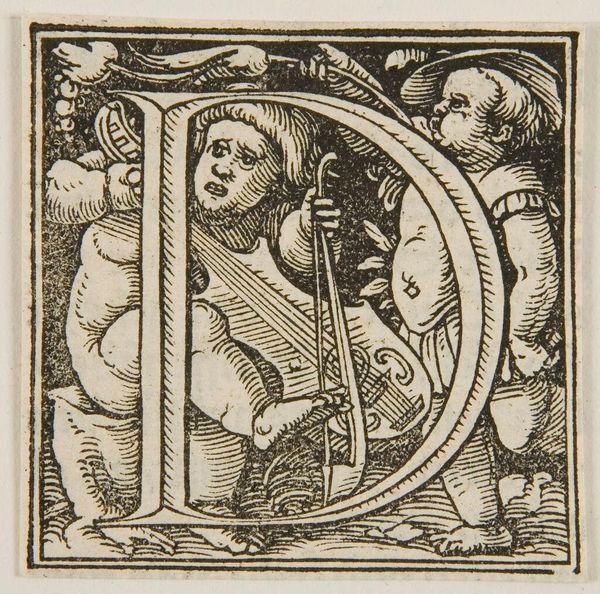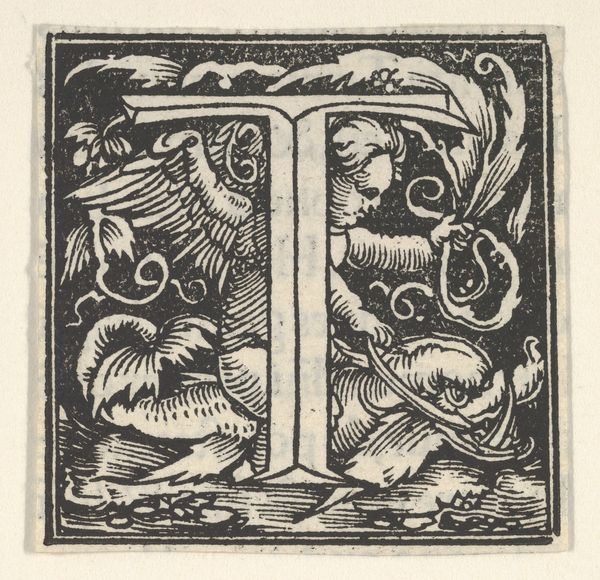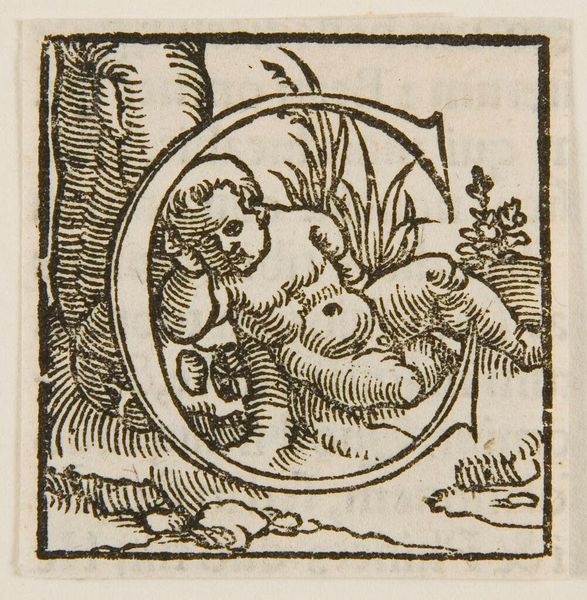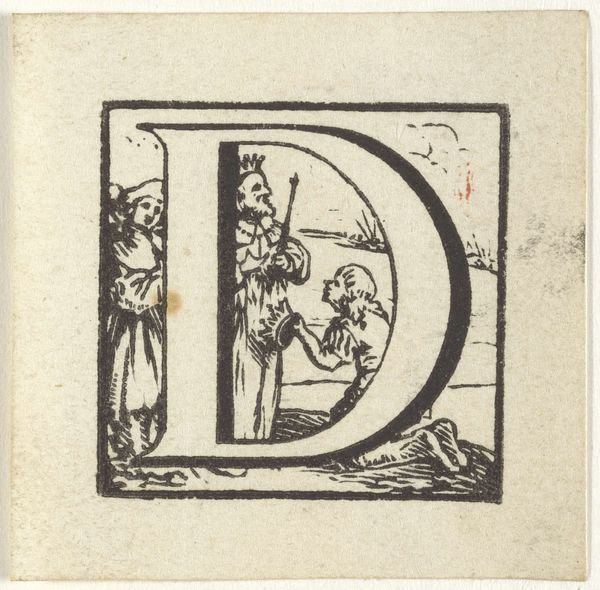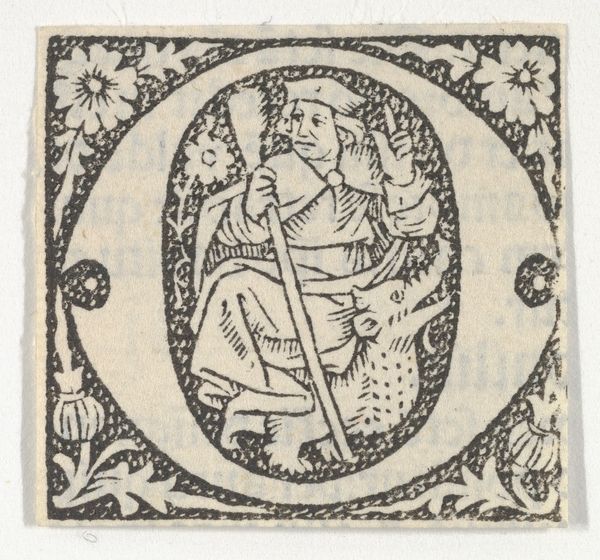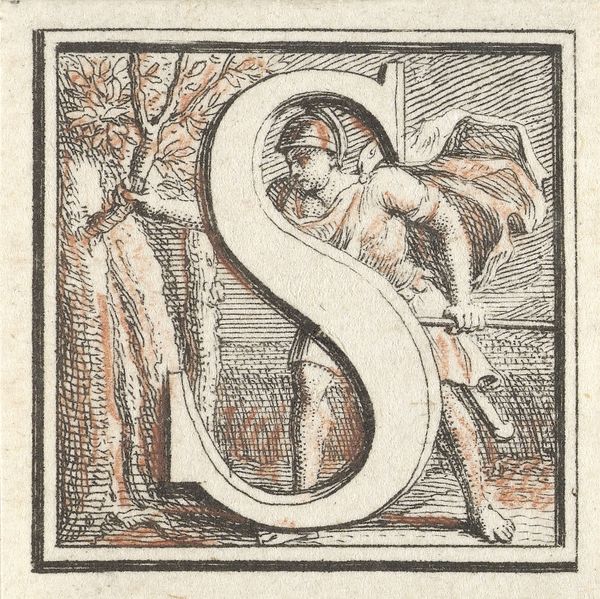
drawing, print, woodcut
#
drawing
#
medieval
#
pen drawing
# print
#
figuration
#
11_renaissance
#
woodcut
#
miniature
Dimensions: Sheet: 1 7/8 × 1 7/8 in. (4.7 × 4.7 cm)
Copyright: Public Domain
Editor: So, this is "Initial letter D with putto" by Heinrich Vogtherr the Elder, dating from about 1533 to 1540. It's a small woodcut or drawing of a letter "D" framing a winged child. What immediately strikes me is how detailed it is, given its size. What do you make of it? Curator: It’s a fascinating example of the interplay between art and societal function during the Renaissance. We need to think about where it was encountered: presumably as an illustration in a book. This period witnessed a surge in printed materials, but how did images function? Editor: That's interesting. I suppose images were becoming more accessible? Curator: Exactly. Consider the politics of imagery: Who controlled their dissemination and how were they used to convey messages? This miniature was likely part of a larger project, perhaps a prayer book or a legal document. The putto, a common motif, hints at innocence or divine inspiration. But why choose a 'D'? Who was the target audience, and what would the intended emotional and intellectual reaction have been? Editor: I see. It’s not just about the aesthetics; it’s about the context. The "D" likely stood for a specific chapter, section, or even person within the document. Curator: Precisely! Think of the museum or library displaying this work. Are we democratizing access, or are we upholding specific power structures and historical narratives? What responsibility do we have to interpret and explain it responsibly? Editor: So, by displaying it, we are not just showcasing artistic skill, but also engaging with complex questions of power, religion, and access. I never thought of it that way. Curator: Absolutely! Analyzing art through its socio-political lens offers new insights and allows us to foster more thoughtful discussions.
Comments
No comments
Be the first to comment and join the conversation on the ultimate creative platform.
